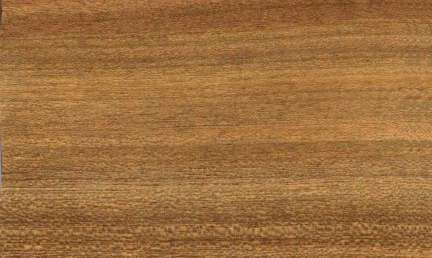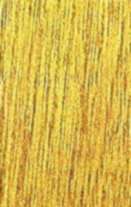 
Binuang (Octomeles sumatrana)
Family: Datiscaceae
Common names: Afu, Bada, Banosan, Banuang, Barauisan, Barobalobo, Barong, Barosing, Barousan, Benoewang, Benua, Benua motutu, Benuang, Benuang bini, Benumba, Benuwang, Bilua, Biluan, Bilus, Binoewang, Binonang, Binua, Binuang, Bunuang, Bunuang bini, Buwar, Erima, Faara, Fadda, Fote, Ilimo, Ipa, Jare, Kabal, Kajoe palaka, Kakerim, Kapu, Kijare, Kinem, Libas-blanco, Ngafi, Palaka, Para, Rima, Samak, Sanai, Senao, Tina, Usu, Walada, Wenuang, Winuang
Distributed in: Brunei, Indonesia, Malaysia, Papua New Guinea, Philippines, Solomon Islands (Oceania and S.E. Asia)
Distribution overview: The natural growth range of this species extends from Sumatra to Papua New Guinea and the Solomon Islands, and northwards to the Philippines. It grows at low altitudes, and is often found in pure stands. The tree regenerate freely and is considered to be a fast-growing pioneer species.
Common uses: Bedroom suites, Boat building (general), Boat building, Boxes and crates, Building construction, Building materials, Cabinetmaking, Canoes, Chairs, Chests, Coffins, Concealed parts (Furniture), Concrete formwork, Construction, Decorative plywood, Desks, Dining-room furniture, Door, Dowell pins, Dowells, Drawer sides, Exterior trim & siding, Exterior uses, Fine furniture, Floor lamps, Form work, Furniture , Furniture components, Furniture squares or stock, Furniture, Hardboards, Hatracks, Interior construction, Interior trim, Joinery, Kitchen cabinets, Light construction, Living-room suites, Matches, Moldings, Office furniture, Particleboard, Plywood corestock, Plywood, Pulp/Paper products, Radio - stereo - TV cabinets, Rough construction, Rustic furniture, Shingles, Stools, Structural plywood, Veneer
Environment profile: Data source is World Conservation Monitoring Center
Vulnerable in the Phillipines. Its status in the wild is currently listed as unknown because of insufficient information in Indonesia, Papua New Guinea, Sabah, Sarawak, Sumatra, and the Solomon Islands
Tree size:
Some trees are reported to have very large buttresses that may reach 12 to 15 feet (4 to 4.5 m) above the the base
Colors: the heart isYellow, Yellow to golden-yellow to orangeand the sapwoodWide, Yellow.The grain isStriped figure, the textureMedium coarse to coarseand the lusterMedium
Natural durability: Susceptible to insect attack, Susceptible to marine borer attack
Odor: Unpleasent aroma associated with freshly cut material
Kiln Schedules: UK=D US=T3D2/T3C1
Kiln Drying Rate: Rapid (<10 days for boards < 32 mm, to <30 days for boards >= 63 mm)
Drying Defects: Slight surface checking, Splitting
Ease of Drying: Stack timber carefully to minimize degrade
Tree Identification: Bole/stem form is straight
Comments: General finishing qualities are rated as good
Blunting Effect: Slight dulling effect on cutting tools
Boring: Fairly difficult to very difficult
Carving: Good results
Cutting Resistance: Moderate to saw
Gluing: Easy to glue
Mortising: Finishes poorly
Moulding: Good finishing
Movement in Service: Good finishing
Nailing: Pre-Boring Recommended, Satisfactory nailing properties
Planing: Very Good to Excellent
Resistance to Impregnation: Sapwood is permeable
Response to hand tools: Fairly Difficult to Difficult to Work
Routing recessing: Routing is easy
Sanding: Very Good to Excellent Results
Veneering qualities: No drying degrade. Dries flat without splitting, Suitable for peeling
Steam bending: Very poor
Screwing: Pre-boring recommended, Satisfactory screwing properties; Turning: Very Good to Excellent Results
Polishing: Very Good to Excellent; Staining: Very Good to Excellent;
- Numerical data Metric
- Numerical data English
- Strength properties
- References
 |
 |
 |
 |
| Item |
Green |
Dry |
Metric |
| Specific Gravity |
0,28 |
|
|
| Density |
|
368 |
kg/m3 |
| Bending Strength |
382 |
547 |
kg/cm2 |
| Crushing Strength |
20 |
29 |
kg/cm2 |
| Hardness |
|
157 |
kg |
| Impact Strength |
35 |
35 |
cm |
| Shearing Strength |
|
51 |
kg/cm2 |
| Stiffness |
69 |
80 |
1000 kg/cm2 |
| Tangential Shrinkage |
|
|
% |
| Radial Shrinkage |
3 |
|
% |
| Weight |
368 |
304 |
kg/m3 |
| Maximum Load |
0,35 |
0,56 |
cm-kg/cm3 |
| Toughness |
|
104 |
cm-kg |
| Static Bending |
201 |
266 |
kg/cm2 |
|
 |  |  |  | | Item | Green | Dry | English | | Bending Strength | 5443 | 7793 | psi | | Crushing Strength | 294 | 417 | psi | | Density | | 23 | lbs/ft3 | | Hardness | | 347 | lbs | | Impact Strength | 14 | 14 | inches | | Maximum Crushing Strength | 2860 | 4589 | psi | | Shearing Strength | | 733 | psi | | Static Bending | 2871 | 3793 | psi | | Stiffness | 990 | 1147 | 1000 psi | | Toughness | | 91 | inch-lbs | | Work to Maximum Load | 5 | 8 | inch-lbs/in3 | | Specific Gravity | 0.28 | | | | Weight | 23 | 19 | lbs/ft3 | | Radial Shrinkage | 3 | | % | | Tangential Shrinkage | 7 | | % | |
Density (dry weight) = 23-30 lbs/cu. ft. 0
Density (dry weight) = 15-22 lbs/cu. ft. 1
Bending strength (MOR) = low 1
Shrinkage, Radial = very small
Max. crushing strength = medium
Shrinkage, Tangential = moderate
Shearing strength (parallel to grain) = very low
Modulus of Elasticity (stiffness) = very low
Modulus of Elasticity (stiffness) = low
Hardness (side grain) = very soft
Shrinkage, Radial = small
Shrinkage, Tangential = fairly large
Shrinkage, Radial = moderate
Max. crushing strength = low
Shrinkage, Tangential = very small
Shrinkage, Tangential = small
Shrinkage, Tangential = large
Weight = light
Surfaces may dent or scratch easily
Soft
Compression strength (parallel to grain) = low
The bending strength of the species in the air-dry condition (about 12 percent moisture content) is considered low - much lower than Teak, for example. The density is average, or medium.
Bolza, E. and N. H. Kloot.1966.The Mechanical Properties of 81 New Guinea Timbers.Technological Paper No. 41.Division of Forest Products, Commonwealth Scientific and Industrial Research Organization, Melbourne, Australia.Bolza, E., Kloot, N.H.,1976,The Mechanical Properties of 81 New Guinea Timbers,C.S.I.R.O. Div. Building Res. Tec.Paper (2nd series) 11Bolza, E.,1975,Properties and Uses of 175 Timber Species from Papua New Guinea and West,Irian,C.S.I.R.O. Div. Building Research Report,no.34Browne, F.G.,1955,Forest Trees of Sarawak and Brunei and their Products.,Government Printing Office, Kuching, SarawakBrown, W.H.,1978,Timbers of the World, No. 4 South East Asia,TRADA, Red Booklet SeriesBurgess, P.F.,1966,Timbers of Sabah,Sabah Forest Record, no.6Chudnoff, M.,1984,Tropical Timbers of the World,U.S.A. Department of Agriculture, Forest Service, Forest Products,Laboratory, Madison.D.'Eispeissis, J.L.,1940,The chief characteristics and uses of 6 New Guinea timbers,Australian Forestry 5 pp81-4Da Costa, E.W.B., Osborne, L.D.,1967,Comparative decay resistance of 26 New Guinea timber species in,accelerated laboratory tests,Comm. Forestry Review 46(1) pp63-74Eddowes, P.J. 1977. Commercial Timbers of Papua New Guinea - Their Properties and Uses. Forest Products Research Center, Office of Forests, Department of Primary Industry, Papua New Guinea.Eddowes, P.J.,1977,Commercial Timbers of Papua New Guinea: Their Properties and Uses,Hebano Press, Port Moresby, Papua New GuineaFarmer, R.H.,1972,Handbook of Hardwoods,HMSOFenton, R., Et al,1977,Lowland Tropical Hardwoods - An Annotated Bibliography of Selected Species,with Plantation Potential,External Aid Div. Ministry of Foreign Affairs, Wellington, N.Z.Floresca, A.R., Rocafort, J.E.,1966,Shrinkage of Philippine Woods,Philippine Journal of Forestry 22(1-4) pp45-57HMSO.1972.Handbook of Hardwoods, 2nd Edition.Revised by R.H. Farmer.Department of the Environment, Building Research Establishment, Princes Risborough Laboratory, Her Majesty's Stationery Office, London.I.U.F.R.O.,1973,Veneer Species of the World,Assembled at F.P.L. Madison on behalf of I.U.F.R.O. Working Party on,Slicing and Veneer CuttingInawat, C.L.,1972,A Study of Veneer Cutting Properties of Binuang (Octomeles sumatrana Miq,Forpride Digest 1(2/3) p61Kartasujana, I., Martawijaya, A.,1973,Commercial Woods of Indonesia,Forest Products Research Institute, Department Pertanian, Bogor Indonesia,Report No.3Keating, W.G., Bolza, E.,1982,Characteristics properties and uses of timbers. South East Asia, Northern,Australia and the Pacific,C.S.I.R.O. Div. Chemical Technology,Inkata Press,1Keith, H.G.,1947,The Timbers of North Borneo,Government Colony of North Borneo, North Borneo Forest Record No.3Kloot, N. H. and E. Bolza.1961.Properties of Timbers Imported into Australia.Technological Paper No. 12.Division of Forest Products, Commonwealth Scientific & Industrial Research Organization, Melbourne, Australia.Kraemer, J.H.,1951,Trees of the Western Pacific Region,West Lafayette, Indiana U.S.A.Lauricio, F. M., Bellosillo, S. B., The Mechanical and Related Properties of Philippine Woods, The Philippine Lumber Journal, 12(5):A-HLavers, G. M.1966.The Strength Properties of Timbers.Forest Products Research Bulletin, No. 50.Ministry of Technology, Her Majesty's Stationery Office, London.Lavers, G.M.,1983,The Strength Properties of Timber (3rd ed. revised Moore G.L.,Forest Products Research Laboratory, Princes Risborough, Building Research,Establishment Report (formerly Bulletin No.50)Malaysian Timber Industry Board,1986,100 Malaysian Timbers,The Malaysian Timber Industry BoardMonsalud, M.R., Tamolang, F.N.,1969,General Information on Philippine hardwoods,Philippine Lumberman 15(6) pp14-38, 15(7) pp46-72Papua New Guinea Department of Forests,1972,New Horizons,Forestry in Papua New Guinea,Jacaranda Press PTY Ltd, BrisbanePapua New Guinea,1982,Papua New Guinea timbers - technical data,Forest Industries Council P.N.G.Reyes, L.J.,1938,Philippine Woods,Commonwealth of the Philippines Department of Agriculture and Commerce,Technical Bulletin,No.7Sarawak - Borneo Lit.Bureau,1961,Common Sarawak timbers,Borneo Lit. Bureau for Sarawak Forestry DepartmentSarawak Forestry Department,1953,Trees and Timbers of Sarawak and Brunei,Sarawak Forest Department Leaflet No.10Smith, D.N.,1959,The Natural Durability of Timber,Forest Products Research Laboratory, Princes Risborough, Building Research,Establishment Record,No.30Smythies, B.E.,1965,Common Sarawak Trees,Borneo Literature BureauStadelman, R.C.,1966,Forests of South-East Asia,Wimmer Bros., Memphis TennesseeTamolang, F.N., Martawijaya, A., Kartasujana, I., Kadir, K., Parwira, S.,1992,Indonesian Wood Atlas Volume II,Department of Forestry, Agency for Forestry Research and Development,,Bogor-IndonesiaWilliams, E.,1958,Uses of some common imported species,Technical notes. Forestry Commission N.S.W. (Div. wood technology 11(3,pp11-12.
|









